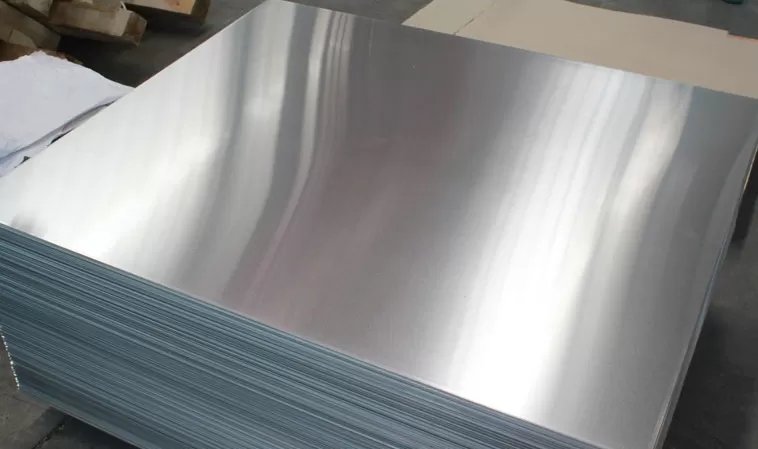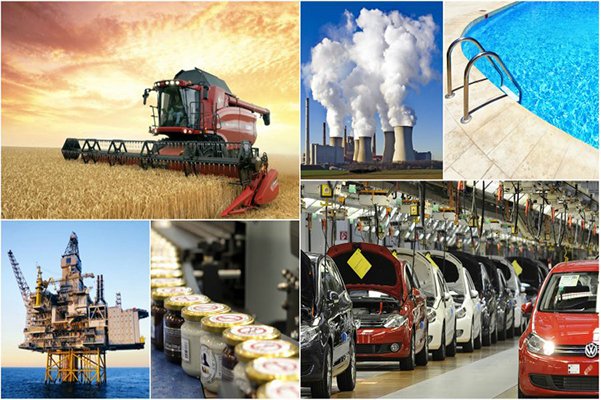416 Stainless Steel:

Stainless steel grade 416 has the highest machinability at 85%. Therefore, stainless steel grade 416 is a free-machining stainless steel. The majority of free-machining stainless steels may have their machinability enhanced by the addition of sulphur, resulting in the formation of manganese sulphide inclusions. This procedure is referred to as "carburizing." The addition of sulphur to 416 steels reduces its formability, weldability, and corrosion resistance to a level below grade 410. Steels of grade 416 are available in highly tempered, hardened, and unhardened forms, and are renowned for their excellent machinability and low cost. For the manufacturing of martensitic steels with a high hardness, final treatments of hardening and tempering are required. The corrosion resistance of austenitic steels is superior to that of these other steels, which are less resistant to corrosion. The operating temperatures of martensitic steels are dictated largely by two factors: the reduction in ductility that martensitic steels suffer at temperatures below zero and the increase in strength that results from over-tempering at high temperatures.
316 Stainless Steel :

The austenitic kind of stainless steel known as 316 grade is characterised by a molybdenum concentration that content from 2-2.5%. The addition of molybdenum makes the metal more resistant to pitting and corrosion, and it also improves the metal's resilience when it is subjected to extreme temperatures. When it comes to performance, this specific type of stainless steel shines most in acidic situations. By using this metal, corrosion brought on by acetic, hydrochloric, and other types of acids may be halted before it ever starts. The theory of passivation is used to stainless steel 316. This principle states that metals may be made "passive" or unreactive to oxidation by corrosive substances that are present in the environment and in process fluids. The process of passivation involves exposing the stainless steel to air, which causes the surface of the steel to develop chromium oxides.
Chemical Composition between 416 vs 316 Stainless Steel
|
Grade |
C |
Mn |
Si |
P |
S |
Cr |
Mo |
Ni |
|
416 |
min. max. |
– 0.15 |
– 1.25 |
– 1 |
– 0.06 |
0.15 – |
12 14 |
– 0.6 |
|
316 |
max |
0.08 |
2.00 |
0.75 |
0.045 |
0.03 |
16.00-18.00 |
2.00-3.00 |
Corrosion Resistance between Stainless Steel 416 vs 316
Corrosion Resistance of 416 Stainless Steel.
The 416 grade of steel is highly resistant to alkalis, acids, alkaline water, and dry air. In contrast, their corrosion resistance is inferior to that of non-free-machining steels, austenitic grades, and ferritic alloys of grade 430 containing 17% chromium. Both the smooth surface and maximum corrosion resistance of these steels are the result of the hardening process. In chloride or marine situations, 416 grades that are appropriate for free machining but have a high sulphur content should not be utilised. Scaling resistance of grade 416 steels may be increased to 760 degrees Celsius in intermittent operations and 675 degrees Celsius in continuous operations. Owing to the fact that 416 steels cannot retain their mechanical properties at temperatures beyond the typical tempering temperatures, these steels should not be used at higher temperatures.

Corrosion Resistance of 316 Stainless Steel.
When subjected to a wide variety of hostile conditions and media, stainless steel type 316 demonstrates exceptional resistance to corrosion. While it is often known as "marine grade" stainless steel, it is not resistant to the warm sea water found in marine environments. Pitting and crevice corrosion are two types of damage that may be caused by warm chloride conditions. At about 60 degrees Celsius, cracking due to stress corrosion may also occur in grade 316. In intermittent service up to 870 degrees Celsius and in continuous service up to 925 degrees Celsius, stainless steel 316 has an excellent resistance to oxidation. Nevertheless, if resistance to corrosion in water is necessary, prolonged usage at temperatures between 425-860 degrees Celsius is not advised. Since 316L is resistant to carbide precipitation, it is the material of choice for this particular application.
Fabrication between Stainless Steel 416 vs 316.
Due to its poor weldability and need for a final heat treatment that hardens and tempers it, Stainless Steel 416 must be completed using methods that enable these treatments. When producing 316 stainless steels, only equipment particularly developed for dealing with stainless steel materials should be utilised. Before utilising any tools or surfaces, they must be well cleaned. These precautions are required to avoid the corrosion of stainless steel by easily corroded metals, which might result in a discoloured look on the surface of the finished product.
Cold Working of Stainless Steel 416 and 316.
It is not suggested that you use this method. Only very little deformations should be attempted with it. Cracking is an inevitable consequence of significant deformation. The stainless steel 316 may be easily shaped into a wide range of components using either roll or brake forming. Stamping, heading, and drawing are all viable options for working with it, but thereafter, the material should be annealed to release any internal tensions. Working Stainless Steel 316 in a cold environment will enhance its strength as well as its hardness.
Welding of Stainless Steel 416 and 316.
Grade 416 steel has poor weldability. The welding process may be started by preheating 416 steels to temperatures between 200 and 300 degrees Celsius, and then continuing with re-hardening, annealing, or stress relief at temperatures between 650 and 675 degrees Celsius. Welding may be done using electrodes that contain tiny amounts of hydrogen. The performance of fusion welding for 316 stainless steel is outstanding, regardless of whether or not fillers are used. The filler rods and electrodes that are recommended for use with Stainless steel 316 are the same as the base metal, which is also 316. It's possible that heavy welded areas may need post-weld annealing.
 "GOVERNMENT RECOGNISED STAR EXPORT HOUSE"
"GOVERNMENT RECOGNISED STAR EXPORT HOUSE"



 India
India Japan
Japan Russia
Russia United States
United States Saudi Arabia
Saudi Arabia Kuwait
Kuwait Singapore
Singapore Malaysia
Malaysia UAE
UAE Germany
Germany Italy
Italy China
China UK
UK Canada
Canada Iran
Iran Thailand
Thailand South Korea
South Korea Turkey
Turkey Morocco
Morocco Costa Rica
Costa Rica Kazakhstan
Kazakhstan Philippines
Philippines Egypt
Egypt Vietnam
Vietnam Oman
Oman Australia
Australia Qatar
Qatar Portugal
Portugal Mexico
Mexico Brazil
Brazil France
France South Africa
South Africa Jordan
Jordan Spain
Spain Hong Kong
Hong Kong Netherlands
Netherlands Indonesia
Indonesia Taiwan
Taiwan Nigeria
Nigeria Bangladesh
Bangladesh Iraq
Iraq Ukraine
Ukraine Poland
Poland Romania
Romania Cyprus
Cyprus Angola
Angola Colombia
Colombia Norway
Norway Chile
Chile Tobago
Tobago Greece
Greece Czechia
Czechia Belgium
Belgium Sri Lanka
Sri Lanka Myanmar
Myanmar Venezuela
Venezuela